In June 2018, the US Food & Drug Administration (FDA), a federal agency responsible for protecting the health of the public drug and food supply, announced that it was investigating the link between grain-free dog foods and a potentially deadly disease, dilated cardiomyopathy (DCM). A year later, the FDA issued an update (Source). Why did the FDA decide to investigate this issue, and is it safe to feed your dog grain-free dog food?
This piece defines a grain-free diet and DCM. It looks at the link between the two and the reason the FDA is investigating the connection between the rising cases of DCM and the growing popularity of grain-free foods. Finally, we look at whether it is still safe to feed your dog a grain-free diet.
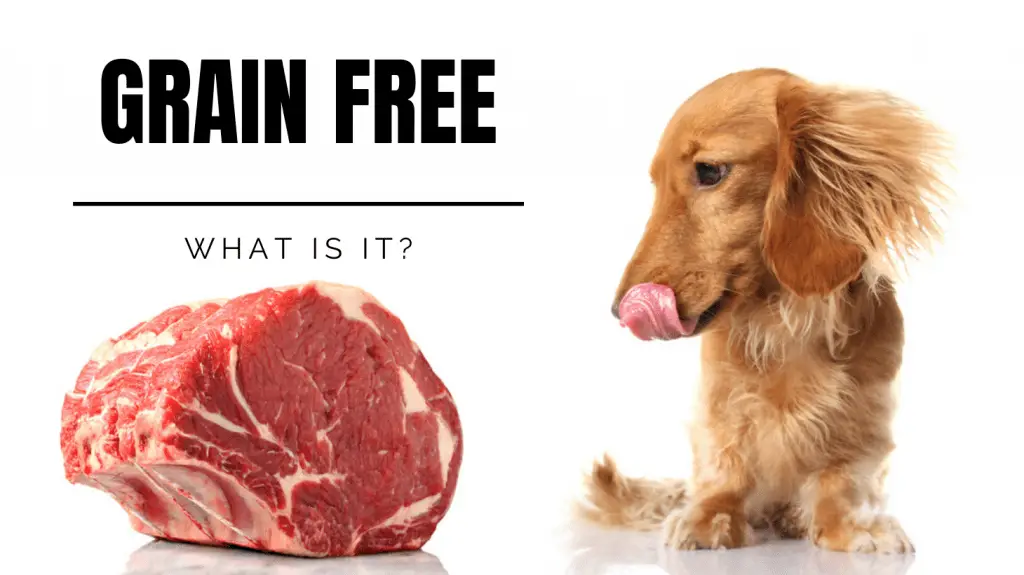
What is a Grain-Free Dog Diet?
When a food product is advertised as being “free” of an ingredient (think “sugar-free” or “cholesterol-free”), it is generally because the ingredient in question has been shown to have a negative impact on health. However, the marketing of “grain-free” dog foods does not appear to have started in response to the health deficits of grains in dogs.
In 2018 the New York Times reported that grain-free diets started to gain traction in 2007 following the Chinese pet food recalls due to melamine contamination. According to the FDA, Melamine is an industrial chemical with no approved use in animal or human food in the US. It is mainly used in industry as a flame retardant, industrial binding agent, and the manufacture of plates and cooking utensils. It is not clear how melamine ended up contaminating pet food (Source).
The connection between the melamine contamination and grain-free diets was based on the fact that the FDA traced the melamine to products with ingredients like rice protein and wheat gluten (grains). Melamine was also found in the kidneys and urine of dead cats that were part of a study conducted by scientists at Cornell University (Source).
Grain-Free Dog Diets Before 2007
If “grain-free” dog food became more popular in 2007, were there any grain-free foods before then? Even though the idea of “grain-free” seems to be a marketing tool nowadays, it looks like dog food before World War II (1939 to 1945) was mostly grain-free, consisting mainly of meat. However, the rationing that become popular during the war resulted in the introduction of dry kibble, which had increased cereal grains like corn. Over time, higher proportions of grains would be introduced into dog food (Source).
Before the 2007 melamine contamination, in the 1970s and 1980s, cat owners and vets were already reporting increased numbers of cats either becoming blind or dying from a lack of Taurine, a compound produced by most mammals in an organ known as the pancreas. This was soon blamed on the increase in grains in pet food because Taurine is obtained from muscle meat and other organs like the kidney, heart, liver, and seafood (Source).
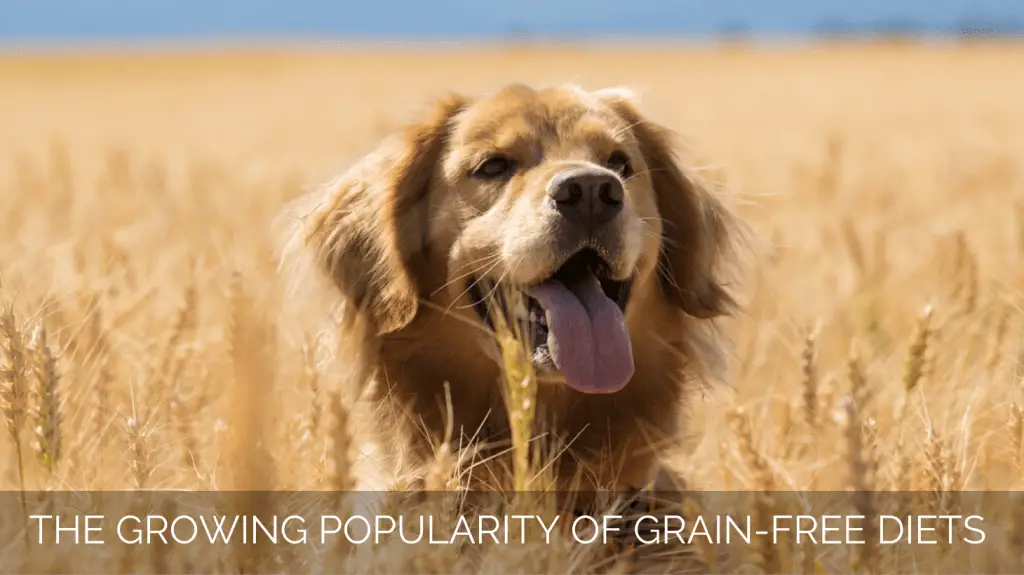
The Growing Popularity of Grain-free Diets
By 2017, the grain-free diet accounted for 44 percent of the market, with almost $2.8 billion in sales per year. Why did grain-free foods grow so popular? Dr. Stanley Coren, a University of British Columbia professor and the author of How to Speak Dog: Mastering the Art of Dog-Human Communicationspeculates. He believes that this popularity is the result of a human eating disorder affecting animals. Coren is referring to the general notion that gluten, a protein found in most grains like barley, oats, wheat, and rye, is not suitable for some humans and should be avoided. Consequently, companies selling grain-free diets could be cashing in on this apprehension (Source).
Dr. Lisa Freeman, a professor at Cummings School of Veterinary Medicine at Tufts University and a veterinary nutritionist supports Dr. Coren’s belief that the denigration of grains could be misplaced. She says, “Contrary to advertising and popular belief, there is no research to demonstrate that grain-free diets offer any health benefits over diets that contain grains” (Source).
It might surprise you to learn that there is a debate as to whether dogs are carnivores or omnivores. Suffice it to say that dogs have evolved alongside humans for thousands of years. As a result, they can remain healthy while eating vegetable matter.
It is nonetheless vital to realize that a “grain-free” diet does not mean a diet where dogs only eat meat. Instead, the distinction is about whether dogs should be fed grains, like barley, corn, oats, rice, sorghum, rye, and wheat — or other starches, like “peas or lentils, other legume seeds, or potatoes listed as primary ingredients” (Source).
Connection to Allergies
Lorie Huston, writing for the pet news website PetMed.com, says that “another popular misconception that many pet owners fall victim to is the assumption that grain-free diets are the best diets for pets with food allergies.” Huston notes that even though allergies occur in dogs, grains are not among the leading allergens found in food. To support this view, the same writer cites research which concluded that beef was the most common allergen among the animals tested (Source).
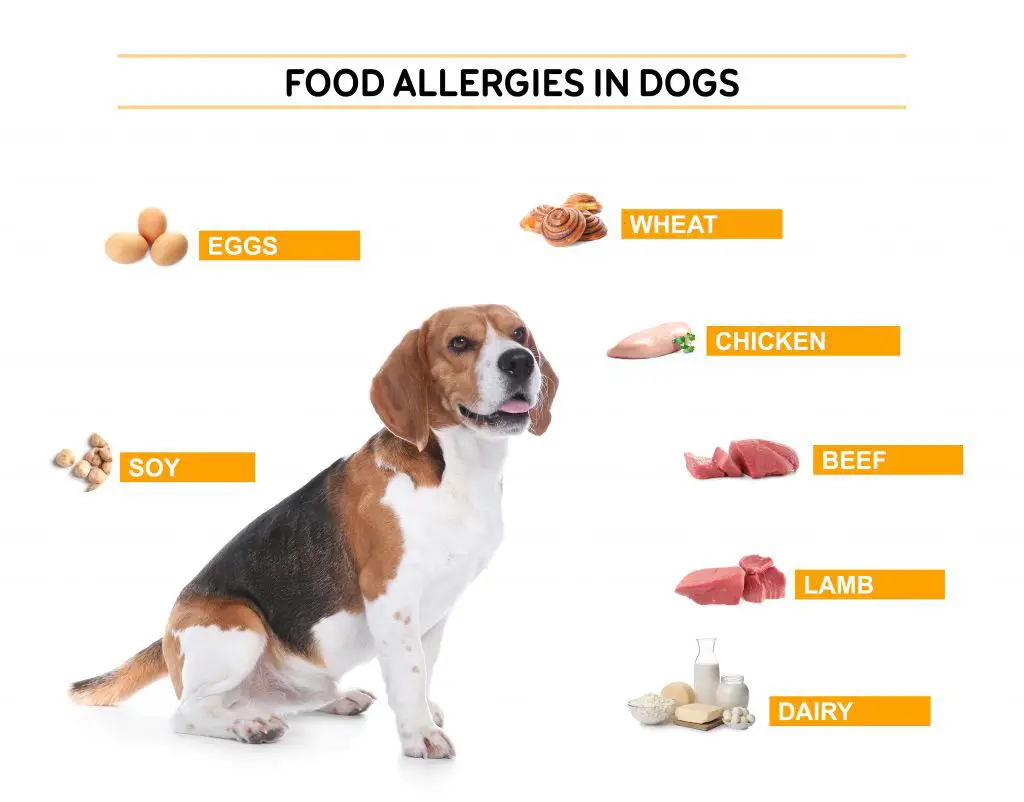
What is Dilated Cardiomyopathy?
According to Dr. Freeman, DCM is a severe heart disease that results in the heart enlarging and beating weakly. Other conditions believed to be associated with DCM include inflammation of heart muscles, poorly contracting heart muscles, low thyroid levels, rapid heart rates, and reduced blood flow into the heart muscles (Source).
Genetic Predisposition
An abnormal heart rhythm characterizes DCM. It typically affects large dog breeds such as Doberman Pinschers, Boxers, Irish Wolfhounds, and Great Danes. In these cases, it has been connected to a genetic component (Source).
The genetic predisposition theory is also supported by the New York-based providers of specialty and emergency veterinary care, the Upstate Veterinary Specialties. The organization reports that genetic predisposition plays a significant role in most of DCM cases.
The American Kennel Club reports that an increase in cases of DCM has recently been noted among dogs like the Golden Retrievers, Shih Tzus, Bulldogs, Labrador Retrievers, and Whippets. These breeds are usually not genetically predisposed to this disease (Source). The link to grain-free diets is based on FDA records, which show that 93 percent of DCM cases, among such breeds, are linked to grain-free diets (Source).
It has been a challenge to clearly say whether the grain-free diet is the reason behind the increase in DCM among dogs that are not predisposed. This is because the disease has also been linked to other factors. For instance, an article published by the Cornel University College of Veterinary Medicine identifies other factors like infections, apart from nutrition and genetic predisposition (Source).
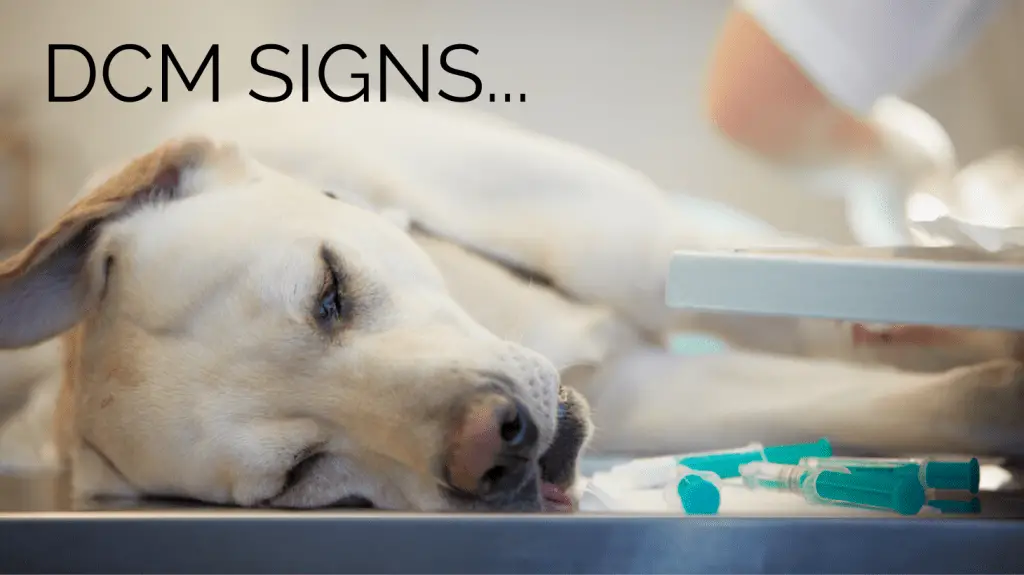
DCM Signs
So how do you tell whether your dog may be suffering from DCM? An article published by Washington State University advises that in the early stages of the disease, no clinical signs may be detected. The same report notes that one of the common early signs could be reduced tolerance to exercise. Due to this challenge in identifying early symptoms, a physical examination by the vet is prudent at regular intervals (Source).
As the disease progresses, the heart’s ability to pump blood becomes even weaker. A notable blood pressure increase in the veins above the heart is also typical. Other symptoms include an accumulation of fluid around the heart and the lungs. This leads to heart failure, which could be characterized by fainting episodes and an increased risk of sudden death (Source).
Why the FDA is Investigating Grain-Free Dog Diet
According to the FDA, its current investigation into DCM involving dogs on the grain-free diet was triggered by an escalation of reports of DCM. For instance, the FDA reports that between January 1, 2014, and April 30, 2019, it received 524 reports. Of these reports, almost half were received between December 1, 2018, and April 30, 2019. In some cases, more than one animal from the same household was involved (Source).
The 2019 FDA update confirms that there is an increase in the number of dogs diagnosed with DCM outside the ones which are genetically predisposed. Most of the dogs involved in these cases had been fed with foods containing legumes such as potatoes, peas, and lentils, which are labeled grain-free.
The graph below, sourced from the FDA, shows the leading DCM cases reported to the FDA between January 1, 2014, and April 30, 2019. (Source)
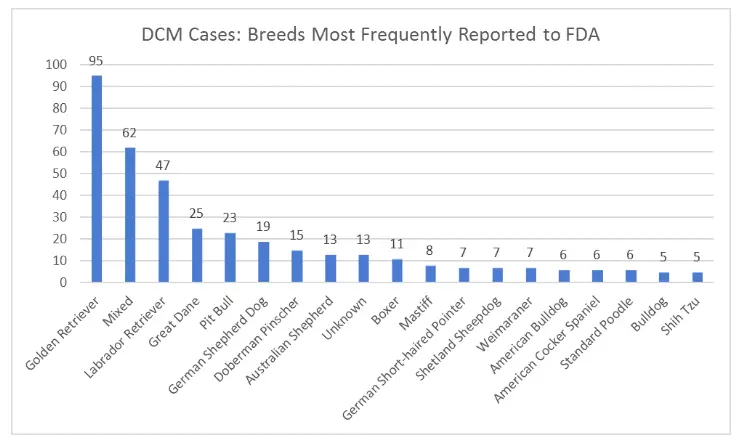
Despite the increased suspicion about these diets, the FDA has not directed pet owners to change their pet diets since the investigation is still underway. The FDA advises that pet owners should always liaise with veterinarians concerning the menu for their dogs.
New information in the 2019 update includes a list of the brands and the corresponding number of reports linked to each brand.
- Acana (67)
- Zignature (64)
- Taste of the Wild (53)
- 4Health (32 reports)
- Earlyborn Holistic (32)
- Blue Buffalo (31)
- Nature’s Domain (29)
- Fromm (24)
- Merrick (16)
- California Natural (15)
- Natural Balance (15)
- Orijen (12)
- Nature’s Variety (11)
- Nutrisource (10)
- Nutro (10)
- Racheal Ray Nutrish (10)
In its 2019, update, the FDA does not provide new recommendations for dog owners. All it says is that the agency is “continuing to investigate and gather more information to identify whether there is a specific dietary link to the development of DCM and will provide updates to the public as information develops.” The agency provides no timeline regarding when the next update will be.
Is Grain-Free Food Safe for Your Dog?
While the increase in cases of DCM among different breeds is apparent, what is still unclear is the reason why. Even though the FDA has indicated that it is investigating grain-free diets, there is no proof showing a clear connection between the two.
Initially, DCM was associated with a deficiency of amino acid known as Taurine, with some breeds of dogs being more vulnerable to this condition. Since then, reports of several cases involving atypical dog breeds such as the Golden Retriever have started to be more common. The common factor unifying these cases could be their diets. (Source).
So, is grain-free food safe for your dog? Dr. Freeman provides the short answer, “the relationship (between grain-free and DCM) has not yet been proven, and other factors may be equally or more important” (Source). This answer implies that, for now, grain-free dog food can still be treated as safe for your dog.
Even though the FDA has instituted an investigation into the grain-free diet, the numbers indicate that this whole issue could be a tempest in a teacup. For instance, if you consider that there were 87.9 million dogs in the US by the end of 2017 (Source) and the grain-free diet had a 44 percent market share, you will discover that about 39 million dogs are on a grain-free diet. If you then compare this to the fact that the number of dogs that died from DCM between January 1, 2014, and April 30, 2015, was 119 (Source), you could argue that the whole grain-free dog food scare may be overstated.
Learn More: Best Grain Free Dog Foods
What Should Dog Owners Do Now?
For now, as we wait for the results from the FDA investigation, the American Kennel Club provides essential advice on what to do next: “As a general rule of thumb, the best thing you can do for your dog’s dietary health is to work with your veterinarian. Together you can weigh the pros and cons of your dog’s diet and, if necessary, monitor your dog for signs of DCM” (Source).
There may be no need to panic about grain-free dog food yet as even the FDA is not ready to advise that these foods are not safe.
Learn More: Best Grain Free Dog Foods or Best Low Sodium Dog Foods
